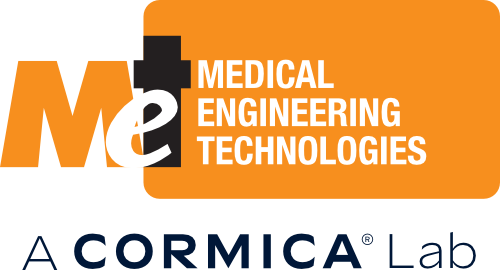ISO 17025 Accreditation Excellence: Navigating ISO/IEC 17025
ISO/IEC 17025 is the international standard that sets out the general requirements for the competence of testing and calibration laboratories.
ISO/IEC 17025 is recognised worldwide, where some guidance’s such as GMP are recognised dependant on country/region, where guidance’s are open to interpretation.
ISO/IEC 17025 specifies the activities that must be included in laboratory operations to promote confidence in its ability to produce valid and consistently reliable testing, calibration, and sampling results.
ISO/IEC 17025:2017 is the current, version of the standard, which MET are accredited and the QMS is in line with the requirements set out. MET have been accredited to ISO/IEC 17025 since 2013 and were reaccredited in 2017 to the current version of the standard.
Whereas certification according to ISO 9001 or ISO 14001 is recognition that an effective management system is in place, ISO/IEC 17025 includes the specific recognition of the technical competence of laboratories. Accreditation of MET is the formal declaration by our Accreditation Body UKAS, that after assessment MET is effective in meeting the requirements of ISO 17025 to perform tests according to our accredited scope of which is located on our website ISO 17025 MET Quality Assurance
What is the structure of the ISO/IEC 17025?
The main requirement sections of the ISO/IEC 17025 are:

Section 4: General Requirements
This section covers impartiality and confidentiality, of which these requirements are critical for maintaining the trust and confidence that the users of tested Medical devices place in MET. Impartiality implies that the laboratory will not allow commercial, financial, or other pressures to compromise the quality of results. Internal issues, personal relationships, or other conflicts of interest are addressed and resolved. Confidentially requires the laboratory to keep all results and information private, MET have Non-disclosure agreements in place with clients and impartiality agreements in place for employees to ensure all is covered.
Section 5: Structural Requirements
This section defines the basic requirements for the organizational range of activities, and commitment to an effective management system. It states that an accredited laboratory must be a legal entity or part of a legal entity, which is
responsible for its testing and calibration activities. It also details management’s responsibilities, responsibilities to customers and regulatory authorities. It also defines the basic requirements for personnel, the authority given to them, and the resources needed to carry out their duties.
Section 6: Resource Requirements
In this section, there are six clauses that outline what a laboratory are required to have available for personnel, facilities, equipment, systems, and support services necessary to perform its laboratory activities.
Section 7: Process Requirements
This section covers 11 clauses for processes to improve efficiency. The sections cover the Review of Requests, Tenders and Contracts, Verification and Validation of Methods which is one of the most technical and most important parts of the standard. Sampling, the handling of test items, and technical record keeping, measurement of uncertainty, quality control, reporting and ensuring the validity of results.
Requirements are also laid out for dealing with complaints and nonconforming work as well as the Control of Data and Information Management.
Section 8: Management Systems Requirements
This is where Options A & B are detailed; Option B applies if the laboratory is part of a larger organization, or if it has its own effective management system in accordance with ISO 9001:2015. And where Option A applies, the laboratory must comply with Section 8’s requirements.
This section covers eight activities, including QMS documentation such as policies and objectives, control of documentation and records, addressing risks and opportunities, improvement, corrective action, Internal audit, and management review, Option A applies to MET.
Why ISO/IEC 17025 benefits our organization?
Accreditation to ISO/IEC 17025:2017 demonstrates that our laboratory is capable of providing consistently valid results, that the individuals performing the work are competent, that we maintain Impartiality and provide confidence to our Clients that our results are accepted between countries.
It enables us to encourage a proactive Quality culture, we are not reactive, where we have defined processes, detailed documentation, and quality policy which details our objectives and works toward continuous improvements.
We are able to promote a culture of risk-based thinking which enables us to have effective evidence-based decision making. MET implements actions to address risks and drive improvements and ensure that any quality risks related to tests are known and controlled.
Our test methods are reviewed and audited to ensure that we are using the latest technology and documentation available. Assessment by a third-party accreditation body verifies that tests and calibrations are done correctly by trained laboratory professionals to a high standard.
What the breakdown of the sections can be seen in diagram below:

* Source sqc.com.my
Written by Naomi Allkins MET Quality Assurance Manager.
